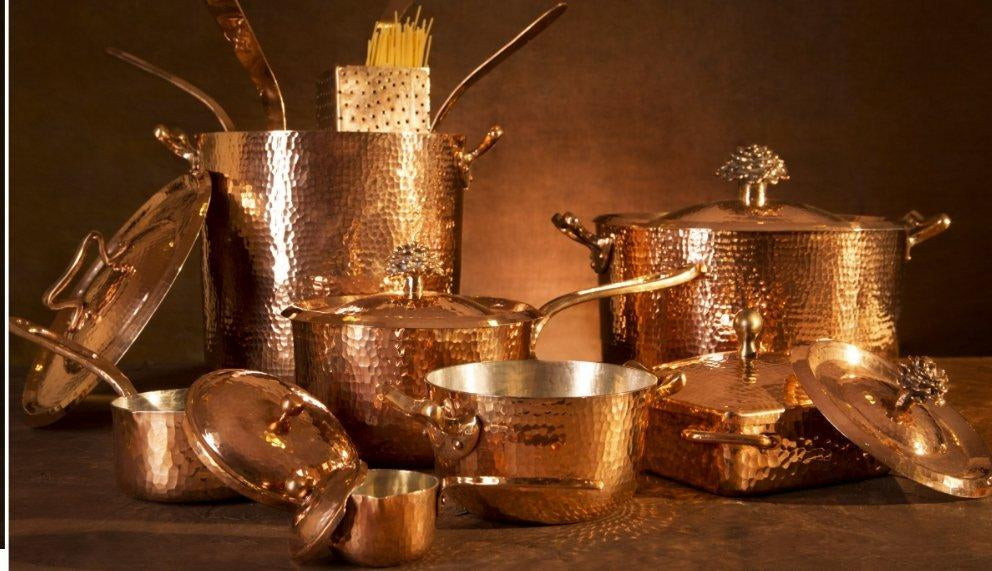Why copper cookware is the best cooking tool

History of Copper Cookware
All chefs say that copper cookware is the best of the best, but only the most sophisticated realize that owning a copper piece means owning a piece of craftsmanship and history.
Copper cookware has been with us literally since the Bronze age. These days, for health reasons, tin-lined copper, or copper with an inner lining of some sort, is most common.
So, if the surface of the pan is actually tin, what are the advantages of cooking with copper? There are many:
-
Super efficient heat conductors (5 times better than stainless steel)
-
Antimicrobial surface (every little helps in these times)
-
Highly durable - cookware can be retinned instead of binned
- Beautiful - many products try to imitate the copper look. Nothing is as good as the real thing though!
Ever since it first appeared in sumptuous Renaissance courts, copper has been dubbed the “queen of pans” and is perceived in the collective imagination of the western world as an exclusive object, a perfect cooking instrument with historical and aesthetic significance.

Amoretti Brothers pans are entirely made by hand in Mexico using sheets of copper up to 1/10 inch, fire-forged and hammered to the desired shape. As a final touch, they line the cooking surface with pure tin.
Made to impress every guest with its nuanced harmonious and luxury feel, a copper pan by Amoretti Brothers can be taken directly from the kitchen to the table, beautifully presenting every gastronomic creation.
How should you use copper cookware?
Copper’s ultimate strength is its incredible conductivity. It heats quickly and diffuses evenly, all the way to the edges of the pan. Set a copper sauté pan on a French top stove and it rips hot. Pull it off and it cools rapidly. Thanks to that quick, nimble reactivity, copper excels at searing, sautéing, sauces, and jams. Use it to cook anything that requires immediate heat for searing, or that needs to reach a specific consistency.
Check our full collection of copper cookware HERE


